To grade a Peace Silver Dollar, examine the coin’s condition using the Sheldon Scale (1-70), focusing on key wear areas like Liberty’s hair and cheek on the obverse, and the eagle’s feathers and rays on the reverse. Check the mint luster, contact marks, and strike quality. Mint State coins (MS 60-70) are uncirculated with full luster, while lower grades show progressive wear. Compare your coin to PCGS Photograde images for accurate assessment. Marks on prominent areas like Liberty’s cheek impact grades more significantly. For professional certification, submit to third-party grading services like PCGS or NGC.
Walking into a coin shop with a Peace Silver Dollar from your grandfather’s collection feels exciting until the dealer quotes a value far below your expectations. The difference? Grading accuracy. A 1922 Peace Dollar in MS-65 condition sells for around $85, while the same coin in AU-50 fetches only $38. Understanding how to properly grade these iconic silver dollars can mean hundreds of dollars in difference and protects you from both overvaluing your collection and accepting lowball offers.
Understanding the Sheldon Scale for Peace Dollars
The Sheldon Scale provides a numerical grading system from 1 to 70, where 1 represents a barely identifiable coin and 70 indicates absolute perfection. For Peace Silver Dollars minted between 1921 and 1935, most surviving examples fall between Good-4 and Mint State-67, with true MS-70 specimens being virtually nonexistent.
The scale divides into distinct categories that matter for Peace Dollars. Mint State coins (MS-60 to MS-70) show no wear from circulation, retaining original surfaces. Almost Uncirculated pieces (AU-50 to AU-59) display slight wear on highest points but preserve much of their original luster. Extremely Fine grades (EF-40 to EF-49) exhibit light wear across major design elements, while Very Fine (VF-20 to VF-39) shows moderate wear with all major details still clear. Coins grading Fine (F-12 to F-15) have considerable wear but remain fully outlined, and Good grades (G-4 to G-6) show heavy wear with peripheries potentially merging into the rim.
The practical impact shows clearly in market values. A 1923 Peace Dollar in MS-63 typically sells for $55, while MS-65 examples command $165, and the rare MS-67 can exceed $2,800 according to PCGS Price Guide data from 2023. That’s a 5000% increase across just four grading points.
Critical Wear Points on the Obverse
Liberty’s hair presents the most crucial grading area on the Peace Dollar’s obverse. On uncirculated examples, every hair strand from the crown of her head down through the curls should show complete definition. The hair above Liberty’s ear and extending toward the back of her head wears first, losing its finest details at AU-58, showing flatness at EF-40, and merging together by VF-20.
Her cheek and jawline provide equally important evidence. Mint State coins display undisturbed luster across these smooth facial surfaces. Even a single rub on the cheek drops the grade from MS-60 to AU-58 immediately, as this represents the highest point on the entire coin. By AU-50, the cheek shows noticeable wear though the skin texture remains visible. At EF-40, the cheek appears distinctly flat but retains its basic contour.
The lower neck area where Liberty’s neck meets her shoulder wears quickly. This junction should show clear separation on Mint State coins. At AU-55, this detail softens slightly. By EF-45, the definition between neck and shoulder becomes indistinct, and at VF-30, these elements blend substantially.
One specific example: A 1925 Peace Dollar with full hair definition but a single contact mark on the cheek typically grades MS-62 to MS-63. The identical coin with that mark located on the field behind Liberty’s head might achieve MS-64 because prominent facial marks carry heavier grading penalties.
Evaluating the Eagle Reverse
The reverse eagle’s breast and legs represent the primary wear indicators for this side. On Mint State examples, every feather on the eagle’s breast shows individual definition with sharp separation lines. The eagle’s right leg (viewer’s left) sits higher in relief and wears first, losing its finest feather details at AU-55, showing flatness across the entire leg at EF-40, and appearing as a smooth outline by VF-20.
The wing feathers require careful examination under proper lighting. Each feather should display internal details on MS coins, with crisp edges separating individual feathers. At AU-58, the very tips of the highest wing feathers may show slight softness. By EF-45, the wing feathers retain their outlines but lose interior details. At VF-30, major feather groups remain visible but individual feathers merge.
The rays emanating from the word “PEACE” deserve special attention. These rays should show full, undisturbed luster on Mint State coins. Even minor wear flattens the highest central rays, particularly those pointing toward 12 o’clock. A coin showing worn rays but strong eagle details typically grades no higher than AU-53, as the rays catch wear extremely early in a coin’s circulation life.
Strike quality complicates reverse grading significantly. The 1922 high relief variety often shows weakness on the eagle’s feathers even on uncirculated examples due to the die design rather than wear. Professional graders distinguish between strike weakness (not penalized as heavily) and actual wear (major grade impact) by examining luster patterns. Worn areas lose luster entirely, while weakly struck areas retain luster despite missing details.
Assessing Mint Luster and Surface Quality
Original mint luster functions as the ultimate determinant between uncirculated and circulated grades. Peace Dollars display cartwheel luster when rotated under a single light source, creating rotating bands of light and shadow across the surface. This luster either exists completely or has been disturbed—there’s no middle ground for true Mint State designation.
Examining luster requires proper technique. Hold the coin at a 45-degree angle under a focused light source approximately six inches away. Rotate the coin slowly while watching the fields and devices. Undisturbed luster flows continuously across all surfaces. Any breaks in this pattern, particularly on high points like Liberty’s cheek or the eagle’s breast, indicate wear and automatic AU grade maximum.
Contact marks and bag marks affect Mint State grades substantially. An MS-60 Peace Dollar may show numerous bag marks from storage bags in the mint or treasury vaults, giving it an unattractive appearance despite technical uncirculated status. MS-63 examples limit marks to a few scattered minor contact points. MS-65 coins allow only tiny marks invisible to the naked eye when viewed from 12 inches. MS-67 and higher demand virtually perfect surfaces with only microscopic imperfections visible under magnification.
Location matters tremendously. A small contact mark hidden in Liberty’s hair might not drop the grade below MS-64. That same mark placed squarely on her cheek could lower the grade to MS-62. A 1926-S Peace Dollar with MS-63 technical quality but a prominent cheek mark sold for $170 at Heritage Auctions in 2023, while a mark-free MS-63 example brought $245—a 44% premium for better eye appeal.
Hairline scratches from improper cleaning destroy value catastrophically. A single hairline across Liberty’s face drops any Mint State coin to AU-50 maximum, and typically renders the coin “details” graded by PCGS or NGC with significant value reduction. A 1927 Peace Dollar that would grade MS-64 ($380) drops to “AU Details—Cleaned” ($75) with hairline presence.
Grading Circulated Peace Dollars Accurately
Circulated Peace Dollars require different evaluation priorities than Mint State examples. At the AU-50 level, look for approximately 50% original luster remaining in protected areas like between letters and around design elements. The high points show definite wear—Liberty’s cheek appears slightly flattened, and the eagle’s leg shows smoothing—but all design details remain sharp and clear.
Extremely Fine grades center on overall design sharpness. An EF-45 Peace Dollar displays light wear across all high points but retains complete hair strand definition in Liberty’s lower curls and clear separation in the eagle’s leg feathers. Roughly 25% of original luster may survive in protected crevices. The key diagnostic: Can you still see individual hair curls above Liberty’s ear? Yes means EF minimum, no means VF maximum.
Very Fine Peace Dollars show moderate wear but maintain design integrity. At VF-30, Liberty’s hair shows as distinct groups rather than individual strands, her facial features remain clear but flattened, and the eagle’s breast feathers exist as groups without individual definition. All lettering remains bold and complete, with no weakness entering the design from the rims.
Fine grade Peace Dollars (F-12 and F-15) display considerable wear. The hair detail reduces to major flow lines only, Liberty’s cheek and neck merge into a smooth surface, and the eagle’s feathers show as bold outlines without interior details. Critical for this grade: Complete separation still exists between the design and the rim, and all letters remain fully readable despite wear.
A practical comparison shows the value spread. The common 1922 Philadelphia Peace Dollar in F-12 sells for approximately $28 based on silver content plus minor numismatic premium. That same date in VF-30 brings $33, EF-40 commands $36, and AU-50 reaches $38 according to 2023 Greysheet wholesale pricing.
Using Professional Resources and Third-Party Grading
The PCGS Photograde online tool provides free access to high-resolution photographs of Peace Dollars in every major grade from Good-4 through MS-67. Comparing your coin side-by-side with these reference images gives reasonable accuracy within one or two grade points for most collectors. The system works by selecting Peace Dollar from the denomination menu, then viewing comparison photos at each grade level.
Physical grading while examining Photograde follows a systematic approach. Start by identifying which Photograde image matches your coin’s overall wear pattern most closely. Then examine specific diagnostic points: Does Liberty’s hair match the reference? Does the eagle’s breast show similar detail levels? Are the rays equally sharp or worn? Matching three or four key points usually confirms accurate grade identification within the one-grade margin of error typical for even experienced collectors.
Professional third-party grading through PCGS or NGC costs $25 to $40 per coin for standard service, with results typically returned within 30 days. The service becomes economically justified when the grade difference impacts value by more than $75. For example, a 1928 Peace Dollar in MS-64 sells for approximately $385, while MS-65 brings $1,850. Spending $30 for definitive authentication and grading makes obvious financial sense.
The grading services provide additional value beyond the numerical grade. Coins receive sonically sealed holders preventing environmental damage and future tampering. PCGS and NGC guarantee their grades, providing insurance against grading errors. Perhaps most importantly, certified coins trade at transparent market prices, while raw (uncertified) coins sell at significant discounts reflecting buyer uncertainty.
One example illustrates the impact. A collector purchased a raw 1934-S Peace Dollar described as “MS-63 or better” for $425 in 2022. After PCGS grading returned MS-64, the coin’s value increased to $750 based on certified market prices. The $30 grading fee generated a $295 value increase through authentication and grade confirmation—though such results aren’t guaranteed and depend on accurate initial assessment.
Understanding which coins to certify requires market knowledge. Common date Peace Dollars in grades below MS-64 rarely justify grading costs unless purchased in bulk submission quantities. Key dates like 1928, 1934-S, and high-grade examples of any date warrant certification. Coins showing AU-58 or better that might reach MS grades definitely merit professional review, as the MS-60 threshold creates substantial value jumps.
Making Your Grading Skills Work in Real Situations
Practice developing grading consistency by examining certified coins at local shops and shows. Most dealers willingly allow comparison viewing of slabbed coins, letting you calibrate your eye against professional standards. Start with clearly different grades—compare an MS-63 with an AU-50, noting the luster differences, wear patterns, and surface quality distinctions. Gradually narrow the comparison range to adjacent grades.
Building a personal reference set accelerates learning. Purchase or photograph certified Peace Dollars in key grades: Good-4, VF-20, EF-40, AU-50, AU-58, MS-63, and MS-65. These seven reference points cover the practical grading spectrum for most Peace Dollar collections. Comparing new acquisitions against known standards provides immediate grading feedback without relying on memory or internet resources.
Record keeping tracks your grading accuracy over time. When examining a raw Peace Dollar, write down your grade assessment before checking Photograde or other resources. After determining the probable grade through references, note both estimates. If you later have the coin professionally graded, compare all three assessments. Most collectors find their accuracy improves from ±3 grades initially to ±1 grade after examining 50-100 coins actively.
The financial benefit compounds with experience. A collector who consistently grades within one point of professional services makes informed buying decisions, avoiding overpriced coins and recognizing underpriced opportunities. This skill prevented one collector from paying $200 for a supposed “MS-64” 1923 Peace Dollar that actually graded AU-58 (worth $45), while enabling the same collector to purchase a correctly identified MS-64 1925 for $75 at an estate sale where the seller believed it was only AU.
Building Confidence Through Hands-On Experience
Your Peace Dollar grading journey starts with the coins already in your collection. Remove each Peace Dollar from its holder under proper lighting—a 60-watt LED desk lamp works excellently—and examine Liberty’s hair, cheek, and neck while comparing to PCGS Photograde images. Check the eagle’s breast, legs, and wing feathers on the reverse. Assess the luster by rotating the coin slowly under single-point lighting. Write down your grade assessment for each coin, creating a baseline inventory.
Visit local coin shops specifically requesting to examine certified Peace Dollars across different grade levels. Most dealers appreciate educated customers and happily discuss grading nuances, especially during slower weekday hours. Handle the slabbed coins carefully, comparing actual examples to Photograde references and noting how professional graders assessed specific wear points and surface issues you might have evaluated differently.
For Peace Dollars that appear to grade AU-58 or higher, or any key date regardless of grade, obtain professional certification before selling. The typical $30 grading fee pays for itself through increased buyer confidence and higher realized prices, particularly on online marketplaces where buyers can’t physically examine coins before purchasing. Focus raw coin collecting on lower-value common dates where certification costs exceed the potential value increase, then submit better discoveries for professional authentication as your skills develop.
You may be interested:
- 1941 Mercury Silver Dime Coin Value Complete Errors List And D S No Mint Mark Worth Guide
- 1965 Dime Coin Value Reveals Rare Silver Planchet Error Worth 9000 Plus Complete No Mint Mark Price Guide
- 1795 Silver Dollar Coin Value How Much Is It Worth Today
- 1804 Silver Dollar Coin Value Complete Class I Class Ii And Class Iii Authentication Guide With Error List
- 1878 Morgan Silver Dollar Coin Value Guide Cc S No Mint Mark Errors List And Current Worth
- 1879 Morgan Silver Dollar Coin Value Guide Complete Errors List And Worth For Cc O S And No Mint Mark Varieties
- How To Grade Walking Liberty Half Dollar Inspect High Points Luster And Wear For Accurate Assessment
- How To Grade Roosevelt Dime Check Wear Strike Quality And Full Bands For Accurate Coin Values

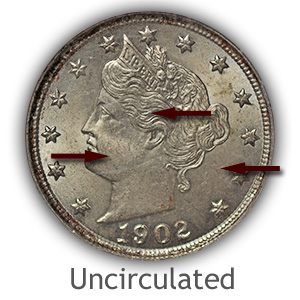
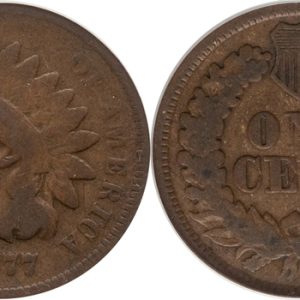
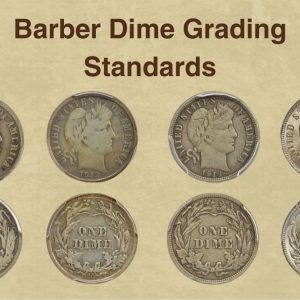
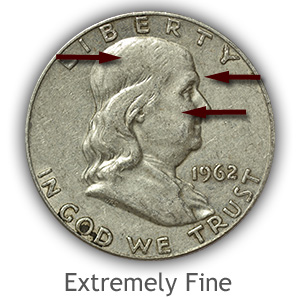
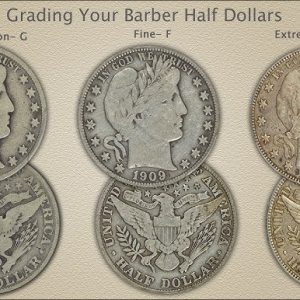
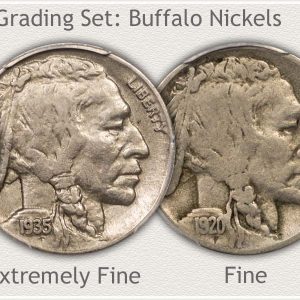
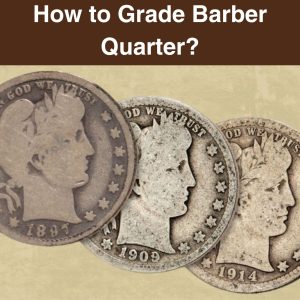
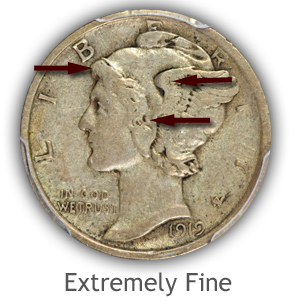

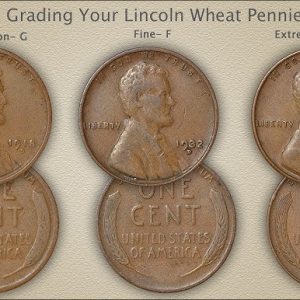
How do you grade a Peace Dollar?
Grading a Peace dollar involves assessing the wear on high-point details like the hair and feathers, the overall presence of original mint luster, and the coin’s surface condition. To grade, examine the clarity of the design, paying close attention to the high points for wear and the surfaces for marks or cleaning, and consider factors like strike and luster to determine a grade on a 1-70 scale. Key areas to check for wear are the high points on Liberty’s hair and the eagle’s feathers.
How can you tell if a 1922 Peace Dollar is rare?
A 1922 Peace Dollar is rare due to its specific high-relief proofs, which have a very low mintage and distinct features compared to the common, low-relief circulation coins. Other rare varieties include certain errors like the 1922-S high relief struck with a mint error, coins with unique die varieties, and special matte or sand-blasted finish proofs, which have extremely low mintages or were never intended for circulation.
Why are 1964 peace dollars illegal?
Minting and recall: The coins were struck at the Denver Mint in 1965 but dated 1964, and all 316,076 were ordered melted down after Congress reversed the decision to produce them. Stolen government property: The US government considers any surviving examples to be stolen property, similar to the situation with the 1933 Double Eagle gold coins. Consequences: If you are found with an original 1964 Peace Dollar, it would be subject to immediate confiscation. Surviving examples: While it is belie…
Is it worth getting silver dollars graded?
Rare coins, and/or those with significant jumps in collector premium from one number grade to the next, are often worth the cost to grade. In many of these cases, collectors are more comfortable bidding on a graded coin than a raw one in the same condition. More competition for an item drives up its cost.